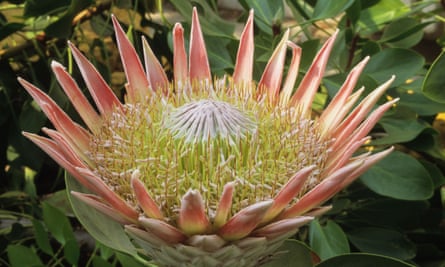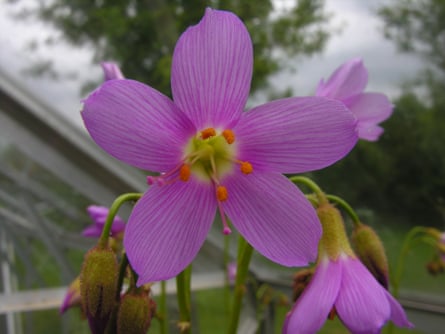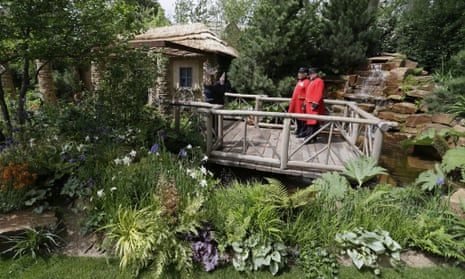For me, this year is definitely about Southern Africa. In September my partner and I will be heading out to the Western Cape of South Africa to observe the habitats of the high altitude members of the Protea family. We want to better understand their cultivation here in the UK and hopefully be able to inform their future ex-situ conservation.
The Guardian’s product and service reviews are independent and are in no way influenced by any advertiser or commercial initiative. We will earn a commission from the retailer if you buy something through an affiliate link. Learn more.
Back in the early 1800’s, growing Protea and many other southern African plants was highly fashionable: now it seems this trend has come full circle. While wandering around the RHS Chelsea flower show this year it was obvious that it is the year of Southern Africa for others too.
Australian garden designer Charlie Albone used the king protea (Protea cynaroides), the national flower of South Africa, in his show garden The Time In Between, but received much criticism over this plant’s supposed lack of hardiness. I have grown P. cynaroides in my own garden in Wales now for more than four years. It likes full sun and poor, acid (phosphate-free) soil, and will flower outside in Britain as far north as Logan Botanic Garden in Scotland. Although the king of flowers, it isn’t a softy and will bounce back from its rootstock even after a good frost.

In Matthew Keightley’s Sentebale - Hope In Vulnerability garden there was a fair selection of southern African delights too. This time, the garden’s provenance was that of Lesotho, a mountain kingdom surrounded on all sides by South Africa. The socio-economic problems Lesotho faces mean that much of its amazing flora is highly threatened in its wild state. The crown-like spiral aloe (Aloe polyphylla), comes from high altitude regions of Lesotho where winter temperatures regularly dip well below freezing. At Chelsea, this plant was to be found on show inside the Grand Pavilion at Trewidden Nursery’s walk-through display, but I know of a large plant of this growing outside, unprotected, in Luton, and my own spiral aloe plant has happily seen minus 6C in a pot without flinching.

Of course, it was in the Grand Pavilion where I found many more South African jewels. Agapanthus and Tulbaghia from Hoyland Plant Centre, Restios from Kelnan Plants and the exhibit by the South African National Biodiversity Institute at Kirstenbosch Botanic Gardens. It is incredible that they managed to finish the display on time, and get a silver medal, given that they were still waiting for their flowers to be released from customs just hours before they were due to be complete.

For me, the truly royal guest at this year’s RHS Chelsea went to Drossera regia, The king sundew, on Hewitt-Cooper Carnivorous Plants’ display. Found only in one valley just outside Cape Town, about 900 metres above sea level, this was possibly the rarest plant at the show this year. Only known from two populations, one of which is probably now extinct due to its habitat becoming overgrown, this Drossera (it means dew-covered) is reduced to just 50 or so known wild individuals. The king sundew is comparatively easy to grow in the UK, but best suited to a greenhouse. This is the one plant I would have happily brought home from this year’s Chelsea.
I left London to head back to North Wales well before the Queen arrived at the showground. Chelsea this year has thoroughly whet my appetite for the aristocratic plants I will see in South Africa, one of the most botanically rich areas of the world, this autumn.

Comments (…)
Sign in or create your Guardian account to join the discussion